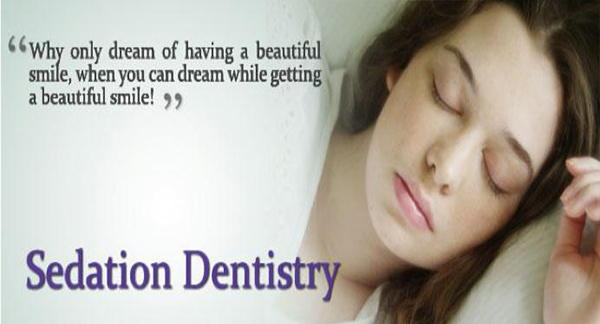
If you are anxious about visiting the dentist or have had bad experiences in the past, sleep dentistry is for you.
Sedation dentistry is a very simple procedure which uses medication to help patients relax during dental procedures. Sometimes people confusingly call sedation dentistry “sleep dentistry,” but you are not asleep, you are actually conscious and will be able to respond to instructions during treatment, but won’t likely remember most of your visit.
You will need someone to drive you to your dental appointment and pick you up. You may be a little groggy for a while afterward, but otherwise there are no lasting effects of sedation dentistry. With the exception of people who are allergic to the medication or have underlying health conditions, sedation dentistry is completely safe.
Sedation dentistry can help many people who have been avoiding dental appointments for many reasons. It can help you if you suffer from:
The levels of sedation used include:
There are three different types of sedation that are used for dental procedures: Intravenous sedation, Oral sedatives and Inhalation sedation.
Inhalation sedation is also called relative anaesthesia, happy gas or laughing gas. It is a gas that is quickly and easily administered by our experienced team through inhalation. This provides a relaxed state of mind.
The gas only takes a few minutes to take effect and is quickly reversed. Therefore there is no inconvenience caused and you are able to go home or back to work on your own. This is the only form of sedation where you may be able to drive yourself home after the procedure.
Two types of masks can be used to deliver gas to the patient-
1. Traditional nasal masks
2. Silhouette nasal masks
At Normanhurst Dental, we use the latest Silhouette low profile nasal masks.
Key Benefits of using Silhouette nasal masks-
IV sedation is administered by a visiting Medical practitioner. This is also called sleep dentistry, conscious sedation or twilight sedation.
With IV sedation, there is a combination of sedatives that are administered through a vein. These will make you feel relaxed so that you can literally sleep through your dental procedure. If needed, we can easily wake you and you will be able to follow instructions. This method allows the dentist to continually adjust the level of sedation.
While sedated, all of your reflexes will remain intact, for example you will be able to swallow and breathe as you normally would. After the procedure, it is necessary for somebody to take you home and stay with you for the rest of the day.
The best part of this sedation is that you will have no memory or recollection of the entire procedure.
Oral sedatives will be given one hour prior to your appointment. This allows you to feel more relaxed and calm for the entire procedure. You can still respond to instructions. Depending on the total dose given, oral sedation can range from minimal to moderate. For minimal sedation, you take a pill. The pill will make you drowsy, although you'll still be awake. A larger dose may be given to produce moderate sedation. Some people become groggy enough from moderate oral sedation to actually fall asleep during the procedure. They usually can, though, be awakened with a gentle shake.
The effects can last for a few hours. It is necessary for somebody to take you home afterwards.
Regardless of which type of sedation you receive, you'll also typically need a local anaesthetic, numbing medication at the site where the dentist is working in the mouth - to relieve pain if the procedure causes any discomfort.
At Normanhurst Dental, we recommend either inhalational sedation or intravenous sedation for predictable and effective results.
For any other queries contact us at www.normanhurstdental.com.au or call us on 02-99898565